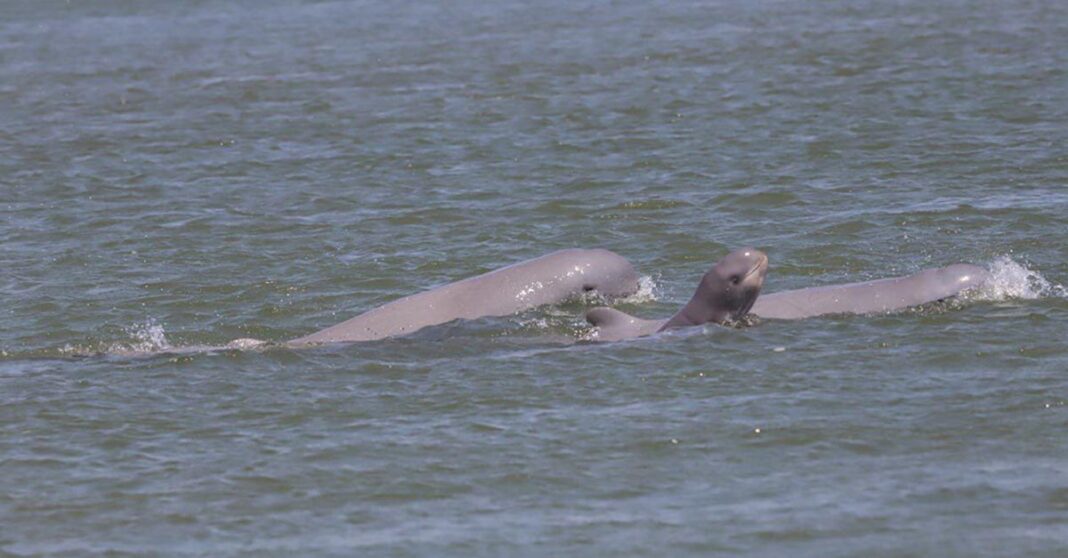An Irrawaddy dolphin calf, estimated to be only two days old, was spotted swimming alongside six adult dolphins in Cambodia’s Kratie Province on 11 February, marking a milestone for a species on the brink of extinction.
Irrawaddy dolphins, primarily found in the coastal region of Southeast Asia, as well as in specific rivers such as the Ayeyarwady in Myanmar, the Mahakam in Indonesian Borneo, and notably the Mekong River, have faced a severe population decline for two decades.
This rare sighting comes against the backdrop of a grim reality for the species. By 2016, it was widely recognized that the Irrawaddy dolphins were functionally extinct in Laos, with only three of their kind remaining in the country. The last known individual was found dead in February 2022 near the Laos-Cambodia border, marking the species’ official extinction in Laos.
However, across the region, the Irrawaddy dolphin population continues to strive for survival. Recent data from Cambodia’s Ministry of Agriculture, Forestry, and Fisheries suggested that in the past year alone, a record-breaking eight dolphin births were recorded, outweighing the five deaths and leading to a net increase in the population.
Ouk Vibol, director of Cambodia’s Fisheries Conservation Department, expressed cautious optimism about the population’s recovery. He emphasized the importance of implementing stringent conservation measures to protect the newborn calves and ensure their survival in the delicate ecosystem they inhabit.
A census conducted every three years estimates that currently there are approximately 92 Mekong Irrawaddy dolphins remaining. These dolphins, highly valued as a national treasure of Cambodia and one of the world’s six rarest freshwater dolphin species, live in a small, 118-mile area between Laos and Cambodia.
These dolphins, with their unique features like a noticeable forehead, short beak, and special tooth arrangement, symbolize the challenges of conserving biodiversity.
The effective conservation of the Mekong Irrawaddy dolphins showcases the vital collaboration among local communities, researchers, and conservation groups, emphasizing the urgent need for concerted action to safeguard the region’s biodiversity.



